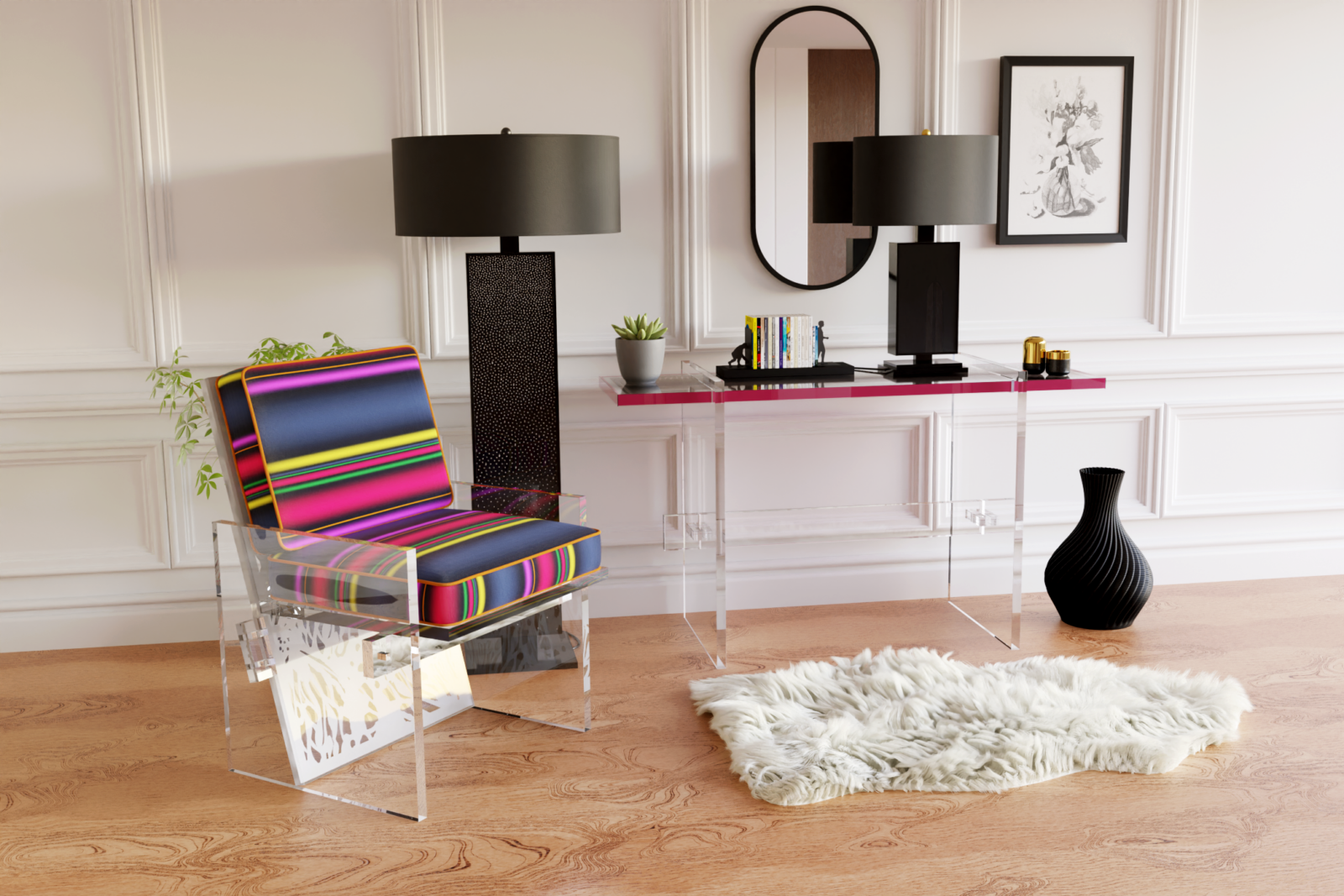Across the Atlantic, both Europe and the United States boast rich and diverse furniture markets, each with its distinctive flair and design sensibilities. While we like to think of ourselves as global, extremely connected; as a monoculture without borders, there are still cultural leanings that exist offline catapulting design markets into the future or keeping them rooted in tradition. We spoke with furniture manufacturers, showrooms, and designers about those contrasts between the European and US furniture markets while shedding light on the prevailing interior design and consumer trends in each region.
The surge in color and chrome
There has been a noticeable surge in the popularity of bold colors within the European and American furniture markets. This trend reflects a shift away from the subdued and neutral color palettes that have dominated interior design for quite some time. Nicolas Tarrico, managing partner of SUITE NY, notes that, “Color in general is a HUGE trend, a move towards bold colors, and not just as accents, [is] making bold colors the central focus of the product design.” He is noticing an emergence of more product licenses adopting a postmodern, early 70s aesthetic with a focus on theatrical, colorful statement pieces. He also observes a a move away from brass and towards chrome.

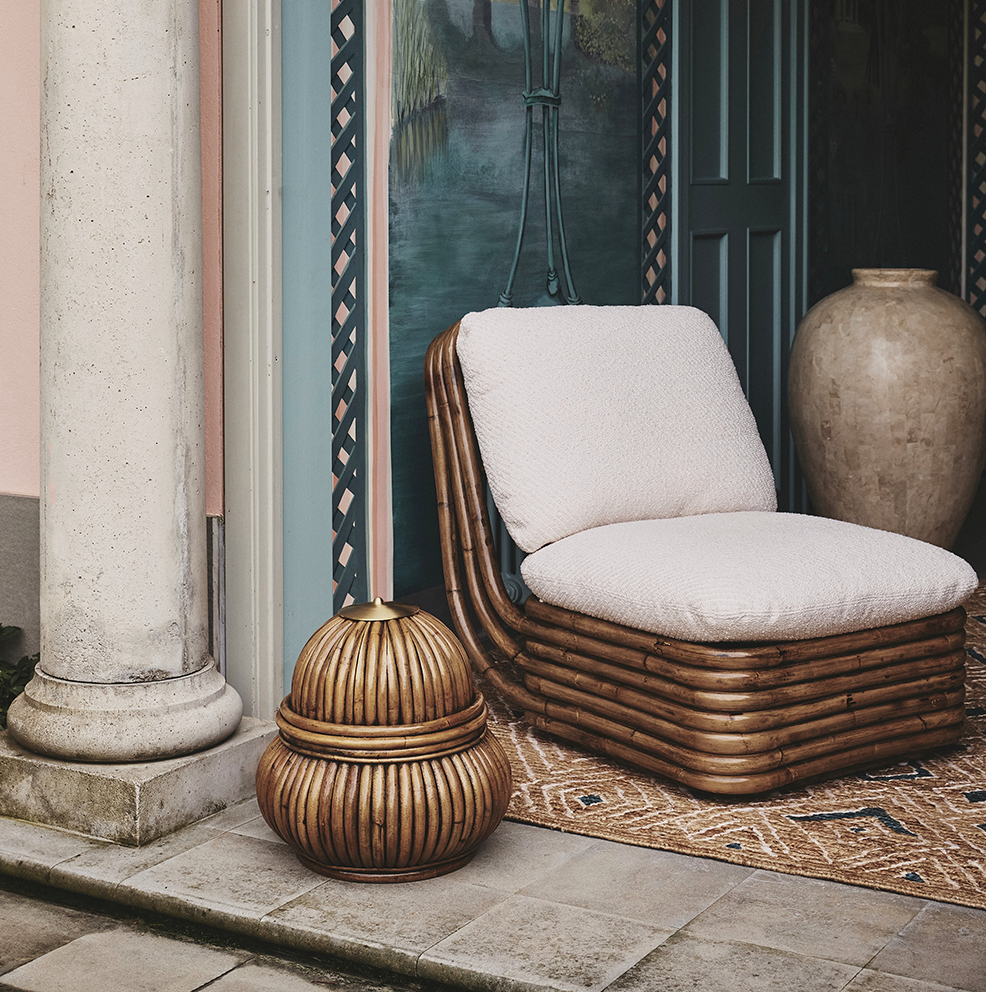
New York interior designer Robin Baron says that while, “we are more global now, you’ll see more color, risky, high-design at the European markets. The EU is inspired by boundary-pushing fashion and is less afraid.” But that sensibility is beginning to infiltrate the US. There is even evidence that the direction of influence may be starting to switch. Catherine Schmetter, co-founder of Russell Sutter had this to say about her recent travels in the EU: “…I had two immediate takeaways: color and form. The overarching message in color was one of neutrality. Upholstered furniture was almost universally displayed in monotone, earthy colors, fabrications were durable plain weaves and non-patterned, and wood tones were light in color. In contrast, the American market is not afraid of color! While there is a strong inclination towards calming natural tones that connect us to the earth, such as shades of white, linen, tobacco, adobe, and sage, there is an equally prominent trend of vibrant colors in upholstery and soft accent pieces.”
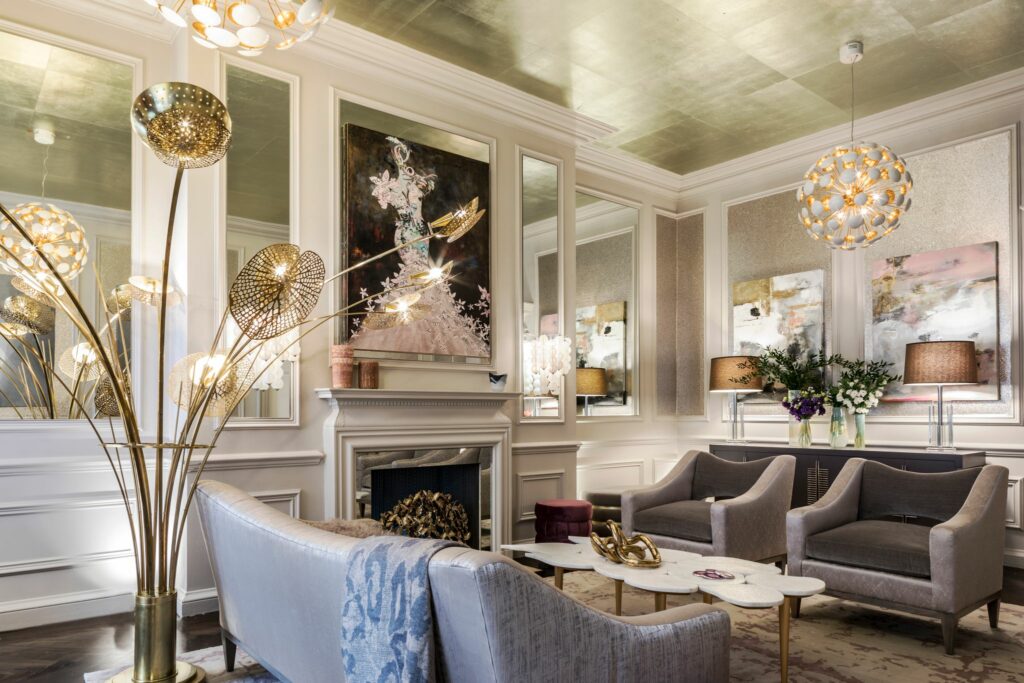
One of the key factors driving the increased popularity of bold colors is the desire for self-expression, as a result of increased social media use and the reigning era of the personal brand and influencers. In an era where personalization and uniqueness are highly valued, people are seeking ways to make their homes stand out and reflect their personal style. Bold colors provide an effective means to achieve this goal, allowing individuals to create visually striking and attention-grabbing interiors that make a bold statement.
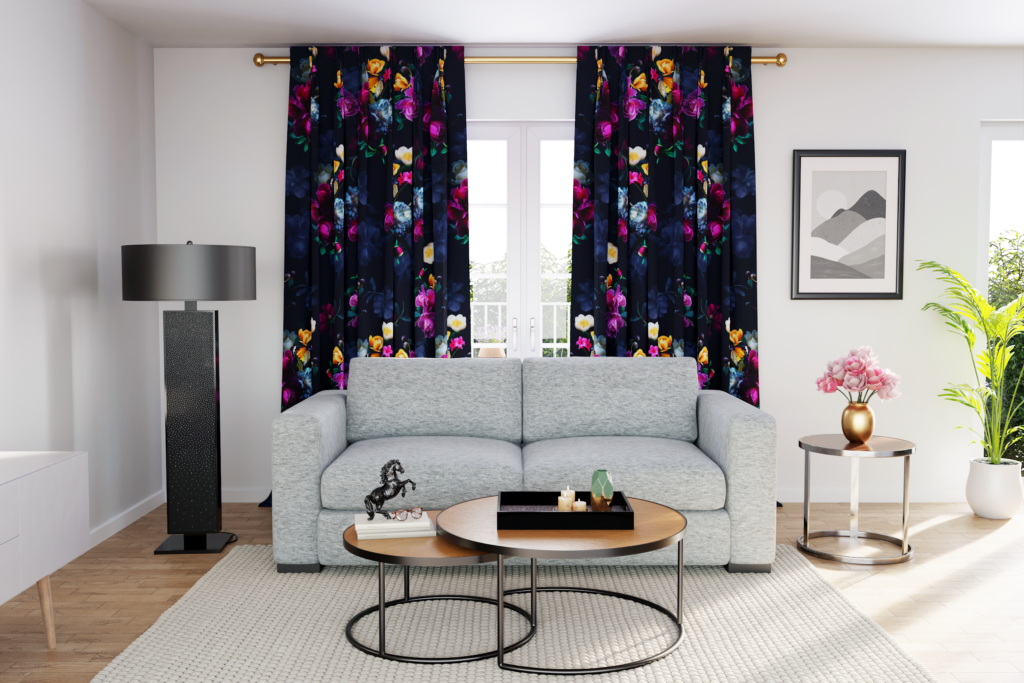
In terms of specific color preferences, vibrant jewel tones such as emerald green, sapphire blue, and amethyst purple have gained popularity in both European and American markets, evoking a sense of sophistication or futurism, depending on how they’re applied. Shades of mustard yellow, fiery orange, and deep red are being used to add warmth and a sense of playfulness to living spaces. Much of this is being seen in the luxury casual category, like the Gubi Boho 72 lounge, pictured above.
The growing interest in sustainability has also contributed to the rise of bold colors. As people strive to make their living spaces more eco-friendly, they are often drawn to second-hand and vintage furniture, or even newer pieces with retro influences. These pieces often come in unique designs and colors that are no longer prevalent in mainstream markets. Consequently, the resurgence of bold colors can be seen as a way to revitalize and repurpose older furniture, adding a touch of contemporary style to classic pieces. On the topic of sustainability…
Sustainable design takes center stage
While the US furniture industry is slower to adopt than its European counterpart, across both continents, there is a growing emphasis on eco-friendly and sustainable design practices. Nicolas Tarrico notes that, “Since bringing European design to the States is a part of the DNA of SUITE NY, we have always been inspired by and interested in how to translate new trends and focus’ we find in Europe for the US market. Sustainability has become the number one centerpiece focus of almost all of the European brands that we represent. This focus starts with sourcing from sustainable forests and moves through to the final packaging.” Using renewable materials, repurposing furniture, and opting for energy-efficient solutions have become key considerations for many interior designers, consumers, and showroom buyers like SUITE NY.
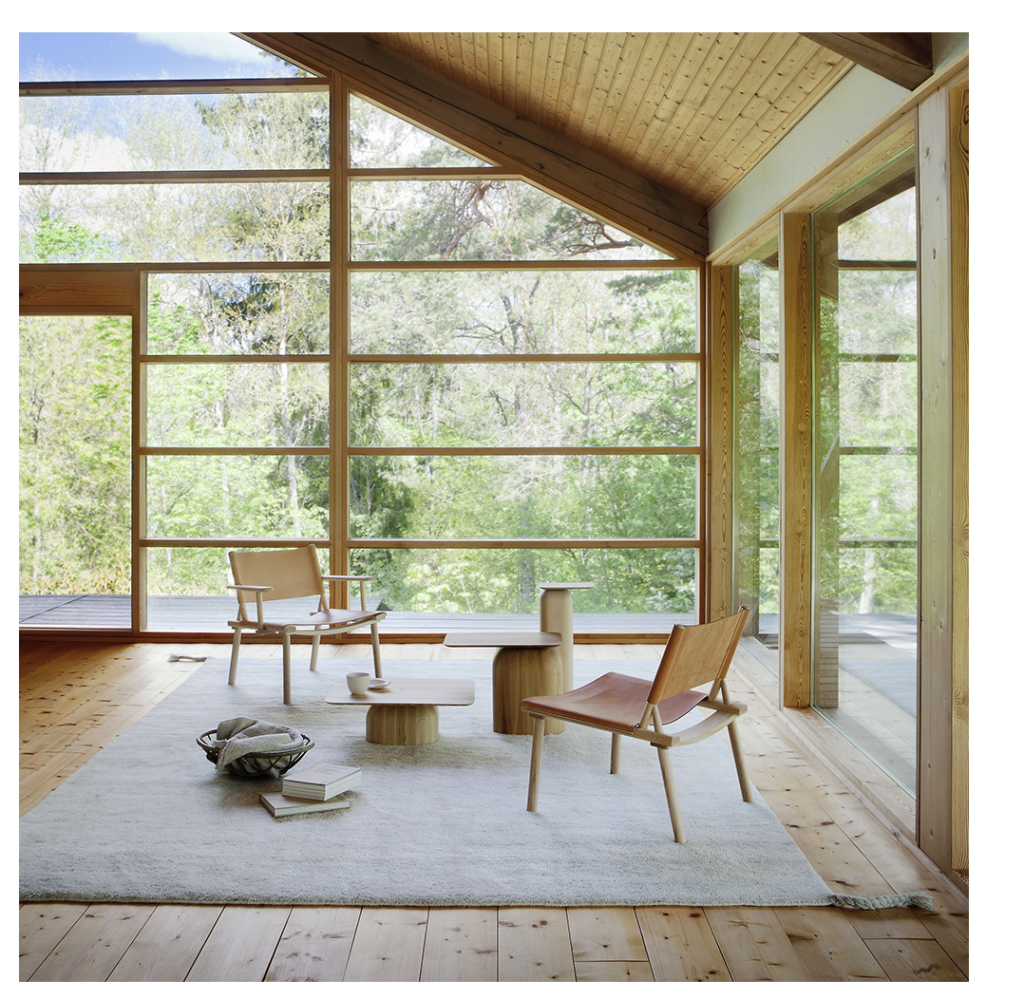
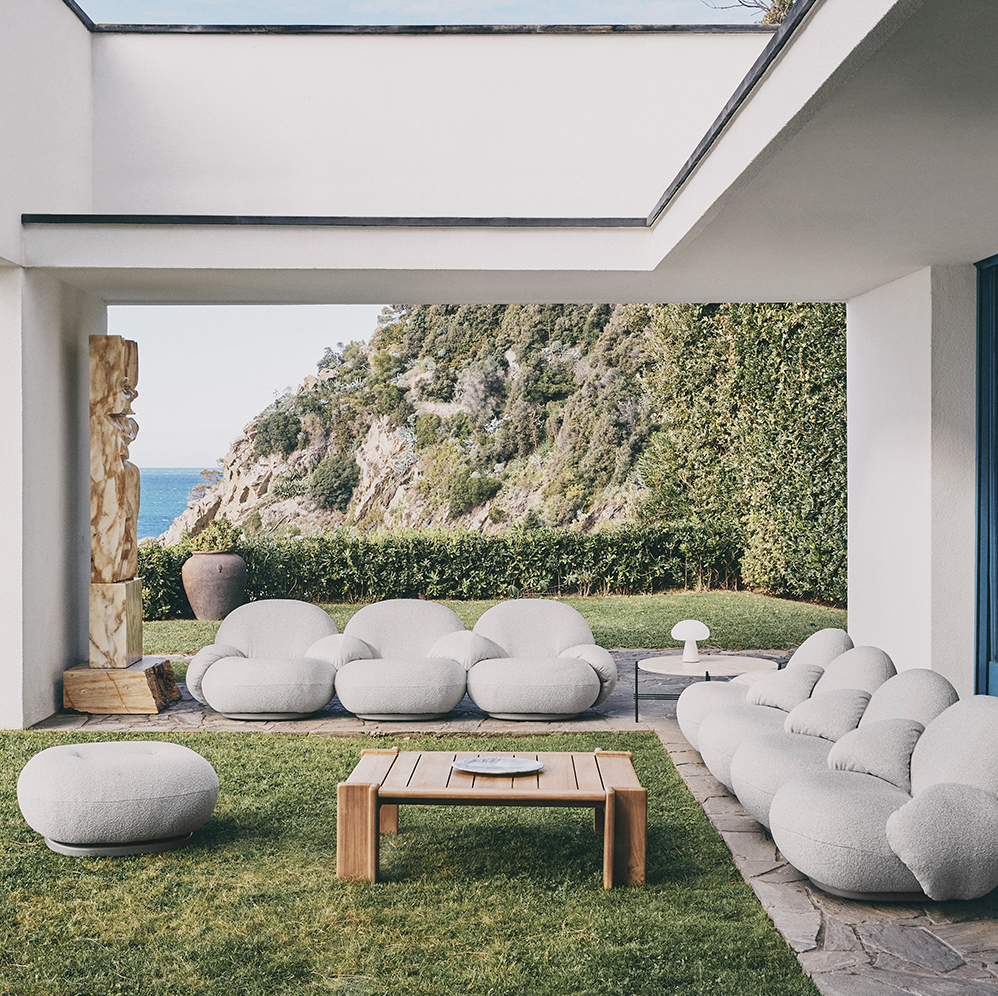
Materially, there has been a significant increase in the popularity of natural, unfinished, woven, and chunky materials within both the European and American furniture markets. Interior architect and product designer, Richard Yasmine notes, “the heavy, bulky and comfy sofas and armchairs such as our “FURRYBUM/SOFTBUM” remain trendy, as well as the raw or natural inspired unfinished material, not to mention our “SILENT HOLLOWS” installation inspired from the geological crust of the earth translated into mirrored shaped volcanoes, lakes and glaciers.” A marriage of both earthy charm and futurism, these materials create a sense of solidity and durability, and appeal to consumers who value quality craftsmanship and long-lasting products.

Catherine Schmetter of Russell Sutter had this to say about sustainability and generational buying power: “…The generation of Gen Y and Gen Z consumers are dictating how and where money is being spent within the industry and they underscore the importance of eco-responsibility and transparency in manufacturing. This is undeniably extremely relevant on both sides of the pond. In the soft decor arena alone, we see the popularity of using organic dyes, and hand printing; the value in fair trade manufacturing; the importance of celebrating and supporting local artisans, which cuts down on shipping needs and carbon emissions, etc. Consumer awareness of our global crisis has undoubtedly impacted how, why and where we make products.”
Aesthetically, consumers are gravitating towards designs that evoke a sense of calm, serenity, and connection with the natural world. Woven materials, such as rattan and wicker, add warmth and texture to furniture, creating a cozy and inviting atmosphere. The intricate weaving patterns and earthy tones of these materials create a visual harmony that complements a wide range of interior styles, from bohemian to coastal and Scandinavian. Filippa Bonde, Head of Product at Bemz tells us “As the Scandinavian brand we are, we are happy to see that both our European and American customers are drawn to the effortless and luxurious look of a quality 100% linen fabric in natural shades, which is hands down our bestselling variants on both markets.”
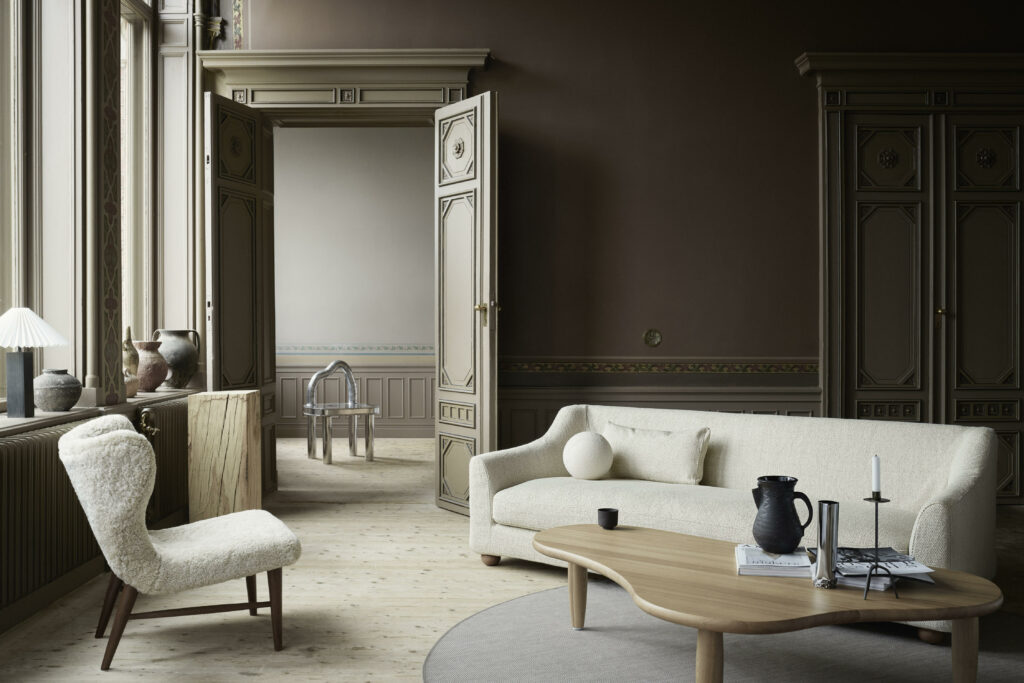
Big, fast furniture and multifunctional trends
The American furniture market is generally larger in terms of both revenue and consumption. The United States has a vast population and a relatively higher average income level, contributing to a larger market size. Bonde also notes that, “…American homes tend to be bigger (hence bigger sofas!) with an interior aesthetic that leans towards more minimalistic sofa covers.”

In Europe, there is a greater prevalence of smaller, independent furniture stores and boutiques, and Europeans are more inclined to prioritize local businesses over big box stores. In the United States, larger chain stores, department stores, and online retailers dominate the market, offering a wide range of furniture options at various price points.

There is a correlation between smallness and uniqueness too. Kim Bailey, principal interior designer of Design Lifestyles in Texas, says, “While Maison Object is a much smaller market in size compared to the US furnishing markets, it is alive with inspiration from vendors and artisans from around the globe…One of my favorite areas at Maison Object, is the Craft area where I’ve met artisans from around the world who produce exclusive one-of-a-kind products that add such a special touch to my projects…Even though I can see most everything at Maison Object in less time than a US market, the city of Paris holds Design Week in conjunction with Maison Object to offer other opportunities for events and shopping throughout the city.” Robin Baron shares Bailey’s love of the Paris design show, “Maison feels more international [than other markets]- it’s glamorous and interesting and fun. It’s more eclectic.”
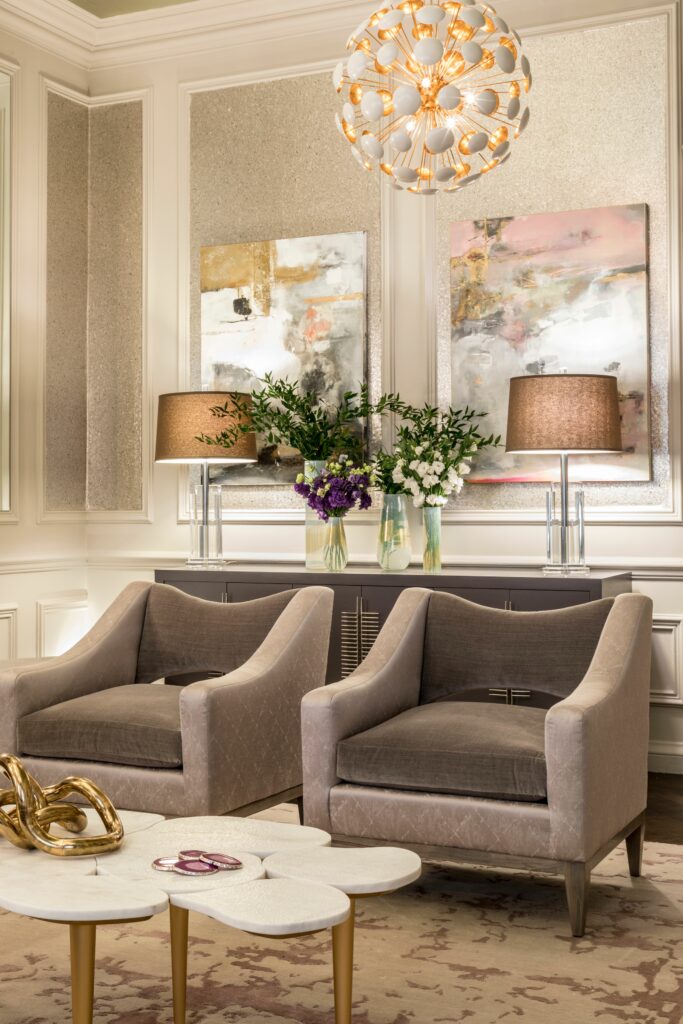
With urbanization on the rise, living spaces, especially in cities, have become smaller and more compact, something that the European market has been more familiar with for quite some time. Interior architect and product designer, Richard Yasmine observes how this shift is influencing product design, “In terms of product categories, there has been a move towards multi- functional and adaptable designs, particularly in response to the trend of smaller living spaces. Furniture that can be easily transformed or has built-in storage has become increasingly popular.” With the increasing need for versatile living spaces, both European and American interior design trends reflect a focus on multifunctional furniture and adaptable layouts. Catherine Schmetter of Russell Sutter echoed this sentiment about sourcing pieces from Europe: “We seek out mixed-use pieces that offer practical functionality beyond their primary purpose. For instance, a table that can also serve as a desk or a compact dining table suitable for apartment living. The versatility of components and techniques employed in the creation of these pieces holds great significance for me.” Convertible sofas, modular storage solutions, and flexible room dividers are popular in both markets, but often sourced from Europe. As living spaces become smaller and more dynamic, consumers are seeking furniture that can adapt to their evolving needs.
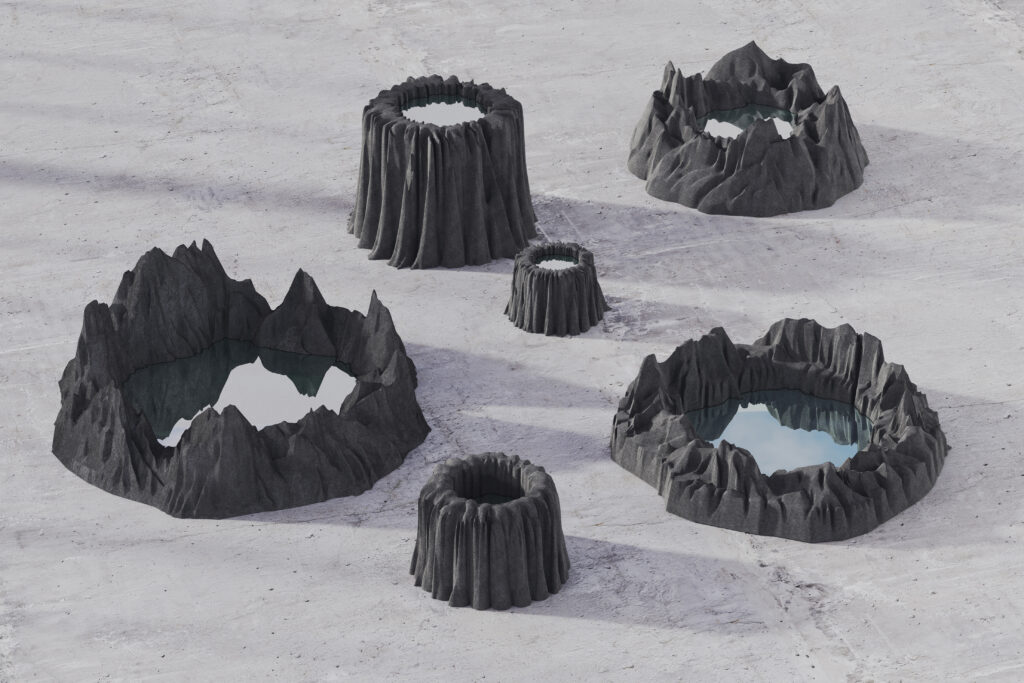
The biggest difference here is in their marketing – in the US, the use of these products is sold as being practical solutions for modern, everyday living, while generally speaking, the European furniture companies emphasize their customizable features or present them as edgier alternatives to traditional furniture. Practicality was a word that came up over again in our discussions with manufacturers, designers, and showrooms. Yasmine explains, “American design tends to be more practical and functional, with an emphasis on user-friendliness and ease of use. Another difference is in terms of consumer preferences and buying habits. American consumers tend to prioritize affordability and practicality when it comes to furniture and home decor, while European consumers are often willing to pay for unique, high-quality pieces with a strong design identity.”
Furniture consumer influences
What is ultimately influencing the decision making in both markets? The European furniture market experiences fluctuations due to variations in economic conditions and consumer confidence across different countries. The market can be impacted by factors such as housing trends, disposable income, and consumer spending habits. The American furniture market also experiences similar fluctuations but is often more influenced by factors such as consumer sentiment, housing market conditions, and overall economic performance. While we are undeniably influenced by overseas aesthetic and lifestyle trends, elements of culture, geography and economics remain, giving each market a distinctive identity.

